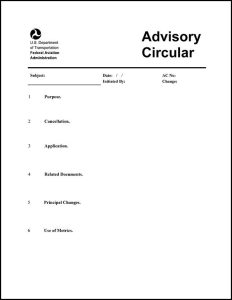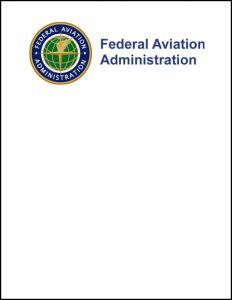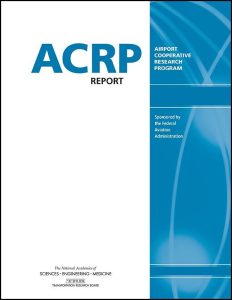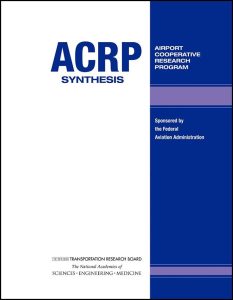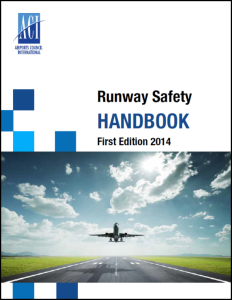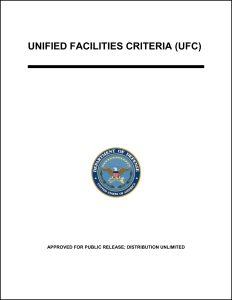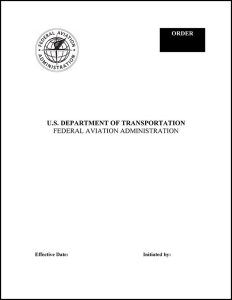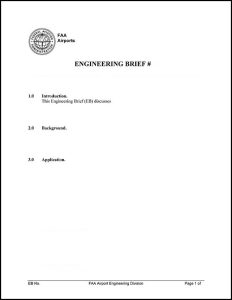To narrow the library of airside resources, use the filter boxes or airport map below or search box above.
Click an item below to expand.
Resources Matching Your Search
2021
This resource is a webpage that provides information on the Electronic Code of Federal Regulations (e-CFR) Title 14, Chapter I, Subchapter G, Part 139, which contains guidance on certification, airport certification manual, and operations.
2017
This advisory circular (AC) sets forth guidelines for operational safety in airports during construction. This AC assists airport operators in complying with Title 14 Code of Federal Regulations (CFR) Part 139, Certification of Airports. For those certificated airports, this AC provides one way, but not the only way, of meeting those requirements. The use of this AC is mandatory for those airport construction projects receiving funds under the Airport Improvement Program (AIP). Chapters include planning an airfield construction project, construction safety phasing plans (CSPP), and guidelines for writing a CSPP. Included in the appendices are a safety and phasing checklist and a construction project daily safety inspection checklist.
2020
This desk reference provides explanatory guidance for environmental impact analysis performed to comply with Council on Environmental Quality (CEQ) Regulations for Implementing the Procedural Provisions of the National Environmental Policy Act (CEQ Regulations) (40 Code of Federal Regulations (CFR) parts 1500-1508); U.S. Department of Transportation (DOT) Order 5610.1C, Procedures for Considering Environmental Impacts; and Federal Aviation Administration (FAA) Order 1050.1F Environmental Impacts: Policies and Procedures.
2020
This advisory circular (AC) provides information on when to issue runway condition reports. It also provides language that addresses the impact of snow accumulation around NAVAIDs. It includes updates based on feedback received from airport operators seeking additional guidance to help improve the implementation of the takeoff and landing performance assessment initiative. These improvements relate to reporting wet runway, slippery when wet reporting procedures, unacceptable aspects of reporting Mu values to aircraft operators, using current runway in use for generating runway surface condition reports, airport operators’ abilities to use mitigations to improve runway conditions, and clarifications on using Conditions Not Monitored NOTAMs and Surface Conditions Not Reported NOTAMs.
2020
This advisory circular (AC) describes the standards and provides guidance in the development of a surface movement guidance and control system (SMGCS) plan for U.S. airports, in which scheduled air carriers are authorized to conduct operations when the visibility is less than 1,200 feet runway visual range (RVR). An SMGCS plan facilitates the safe movement of aircraft and vehicles on the airport by establishing more rigorous control procedures and requiring enhanced visual aids.
2015
This advisory circular (AC) provides guidance for the preparation of master plans for airports that range in size and function, from small general aviation to large commercial service facilities. The intent of this AC is to foster a flexible approach to master planning that directs attention and resources to critical issues. The scope of each master plan must be tailored to the individual airport under evaluation.
2015
This advisory circular (AC) provides guidance for airport sponsors in the selection and engagement of architectural, engineering, and planning consultants. It also discusses services that normally would be included in an airport grant project, types of contracts for these services, contract format and provisions, and guidelines for determining the reasonableness of consultant fees.
2013
This advisory circular (AC) sets forth the standards for a segmented circle airport marker system. This provides for a minimum installation consisting of a segmented circle located off the traffic area with a conventional wind cone located at its center. To this minimum installation, other pilot aids and traffic control devices are added as required to meet the conditions existing at a particular airport.
2019
ACRP Report 16, second edition, is designed to help airport practitioners, owners, operators, managers, and policymakers of small airports, who may have varying degrees of experience and backgrounds, to fulfill their responsibilities in such areas as financial management, oversight of contracts and leases, safety and security, noise impacts, community relations, compliance with federal and state obligations, facility maintenance, and capital improvements. The first edition has been edited and reformatted for currency, relevance, and usability and updated with additional information and new subject areas (e.g., unmanned aircraft systems, geographic information systems, digital notices to airmen, social media, and federal and state obligations). Also, hyperlinks to many of the documents and resources mentioned in this report, such as ACRP publications, industry sources, and sample checklists, have been collected into ACRP WebResource 6: Resources for Managing Small Airports.
2019
The needs of airports may vary, depending on the types of operations typically conducted at the airport as well as the type of weather common to the airport. ACRP Synthesis 105 aims to provide the operators of general aviation (GA) airports a comprehensive source of information about airport-based weather observation options, so they may make informed decisions to support the operational needs of their airport. Weather observations at airports can come from either FAA-approved (certified) or advisory (non-certified) sources. Weather reporting at a GA airport, whether certified or not, typically comes from automated sources, because human observers are increasingly being phased out or stationed mainly at commercial service airports.
2014
Runway Safety Handbook provides methodologies and best practices that can be implemented to help airport operators achieve a state-of-the-art level of runway safety. It provides guidance material for the development of runway safety programs for all airports (large or small) as well as ways to tailor, improve, and expand existing programs. This resource is available from the ACI store for $125 for members and $1,000 for non-members.
2020
This manual provides standardized airfield, heliport, and airspace criteria for the geometric layout, design, and construction of runways, helipads, taxiways, aprons, landing zones (LZs), short takeoff and vertical landing (STOVL) facilities, unmanned aircraft system (UAS) facilities, and related permanent facilities to meet sustained operations for U.S. Army, Navy, Air Force, and Marine Corps airfields.
2020
This advisory circular (AC) describes acceptable methods and guidelines for developing takeoff and initial climbout airport obstacle analyses and in-flight procedures to comply with the intent of the regulatory requirements of Title 14 of the Code of Federal Regulations (14 CFR) Part 121, §§ 121.177 and 121.189; Part 135, §§ 135.367, 135.379, and 135.398; and other associated one-engine-inoperative (OEI) requirements relating to turbine engine-powered airplanes operated under parts 121 and 135. The methods and guidelines presented in this AC are neither mandatory nor the only acceptable methods for ensuring compliance with the regulatory sections. Operators may use other methods, if those methods are shown to provide the necessary level of safety and are acceptable to the FAA. This AC need not serve as the sole basis for determining whether an obstacle analysis program meets the intent of the regulations. However, the methods and guidelines described in this AC have been derived from extensive FAA and industry experience and are considered acceptable to the FAA when appropriately used.
2013
This advisory circular (AC) contains the FAA specification for wind cone assemblies to be used to provide wind information to pilots of aircraft.
2018
This order provides general information on the installation, operation, and use of runway visual range (RVR) systems.
1993
This order directs the use of drawings, an instruction book and the site acceptance of new runway visual systems using teledyne controls.
2016
Engineering Brief (EB) 79A provides guidance for determining whether navigational aids (NAVAIDs) and associated equipment are fixed by function and whether they meet, or could be made to meet, frangibility standards if located inside the runway safety area (RSA).
2011
ACRP Synthesis 28 explores physical, visual, and communications systems interference impacts from energy technologies on airports and aviation safety. The energy technologies are solar photovoltaic panels and farms, concentrating solar power plants, wind turbine generators and farms, and traditional power plants.
2016
ACRP Synthesis 78 compiles information about current continuity planning practices at airports of different types and sizes and determines how they can be effectively applied to smaller airports to maintain resilient operational and business capacity during a disruption, regardless of the cause. Business continuity planning is the process of developing a plan for operating essential operational and business functions in the face of a disruption caused by any types of emergencies, incidents, or events. This study addresses business continuity planning for emergency and non-emergency disruptions.
1968
This advisory circular (AC) contains a revised FAA policy under which the FAA accepts conditional ownership of equipment and systems from civil aviation interests, without the use of federal funds, and operates, maintains, and provides the logistic support of such equipment. This AC is only applicable to those navigational and air traffic control systems and equipment installed subsequent to the issuance of this AC.

